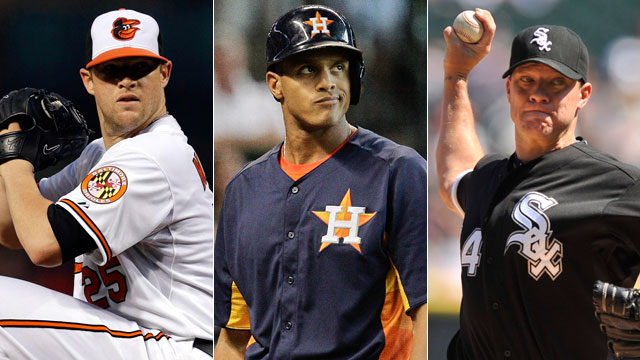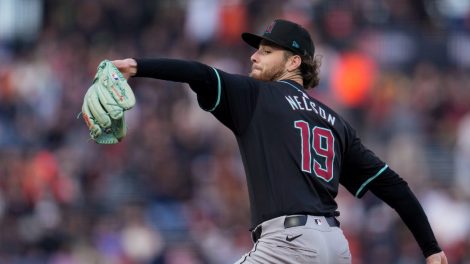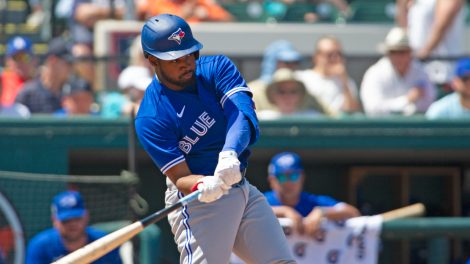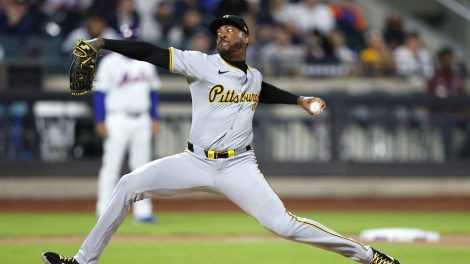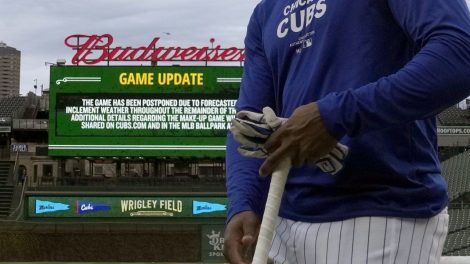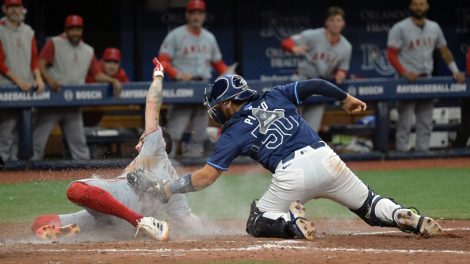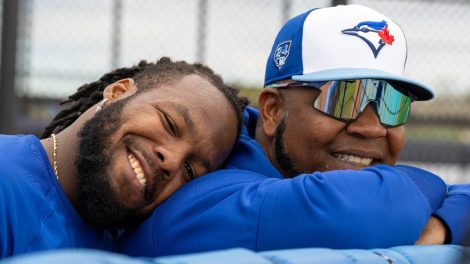The most accomplished hitter traded on deadline day this week was Justin Maxwell. With all due respect to Maxwell, Wednesday’s trade deadline wasn’t exactly action-packed.
Some within the industry are now wondering if it’s time to push back the date of the non-waiver trade deadline, which has been July 31 since 1986. It’s a debate that surfaces at baseball’s general manager meetings on an annual basis, and it’s now in the spotlight.
In recent weeks prominent baseball writers including Jon Paul Morosi and Dave Cameron have argued that Major League Baseball should move the deadline back by ten days or two weeks to account for other changes taking place across the sport.
Others believe the deadline works the way it is, and that there’s little to be gained by tinkering with a system that has had clear benefits for decades.
In the aftermath of the 2013 trade deadline, Sportsnet reached out to 23 major-league executives, most of whom are general managers or assistant general managers.
Each person was asked whether they would be in favour of moving the non-waiver deadline back by a week or two, and the responses show that while many in the game are content with the July 31 deadline, there’s support for pushing it back.
Fourteen of the 23 respondents would like to see the current deadline pushed back, while seven said July 31 works. Two others declined to state a preference.
Here are the arguments for and against the July 31 deadline, based on responses from baseball officials around the major leagues.
WHY THE JULY 31 DEADLINE WORKS (7 VOTES)
MERCENARIES? NO THANKS
If a player joins a team six weeks before the end of the season and leads his new team to a World Series, is the accomplishment cheapened in any way? The later MLB pushes the deadline, the more players seem like mercenaries.
Given the way the league’s celebrates players such as Chipper Jones and Derek Jeter who spend full careers with one team, it seems doubtful that MLB would love the idea of six-week rentals.
DON’T LESSEN IMPORTANCE OF OFF-SEASON
A mid-August deadline may allow teams to use late-season trades as a crutch. For some, that would diminish the charm of the 162-game schedule — one of the defining aspects of the MLB season.
The current system forces teams to construct their rosters carefully leading into the season, and a later deadline could lessen the importance of off-season moves.
On a related note, multiple executives pointed out that the deadline itself has become less influential than it once was for a variety of reasons. Some trades happen in June, and others occur in August, so July 31 itself doesn’t have to be a frantic day to be a success.
DON’T LESSEN IMPACT OF MIDSEASON DEALS
It’s hard enough for players to make an impact in the nine weeks following the July 31 deadline. Good luck finding a player who can propel a team into the playoffs in six weeks. Buyers would realize this and lower their offers accordingly.
The current deadline allows teams to convert expiring assets into something with lasting value. Moving it back would limit the calibre of trade offers that non-contenders get and limit their ability to benefit from players nearing free agency.
DRAFT PICK COMPENSATION WILL STILL LIMIT TRADES
Don’t place all of the blame for the slow deadline on the date itself. Under baseball’s current collective bargaining agreement, players traded mid-season cannot be linked to draft pick compensation.
Teams intent on obtaining a draft pick for a prospective free agent cannot trade that player at any point, whether the trade deadline is April 15 or September 15.
As a number of executives pointed out, this rule limits trades. There’s draft pick value that simply disappears when a trade occurs — a trade involves less total value than a non-trade.
REASONS TO PUSH THE DEADLINE BACK (14 VOTES)
TEAMS NEED MORE TIME
Here’s the essence of the most common argument presented by executives who support a later trade deadline: July 31 is simply too early for teams to know whether or not they are contenders.
While the July 31 deadline worked for years, the additional Wild Card berth in each league means more teams than ever are within striking distance of playoff spots at the end of July. As a result, there are fewer sellers and the asking prices on available players soar.
“Fundamentally,” one executive explains, “the second Wild Card has changed the playoff system.”
Another executive agrees that the landscape has now changed, and says it is now “incumbent” on MLB to adjust accordingly.
Teams such as the Philadelphia Phillies, Toronto Blue Jays and Seattle Mariners did not make trades this year. While their playoff chances are extremely remote from an objective standpoint, they chose not to concede that they’re missing the playoffs.
Wait a bit and it would be easier for general managers and fans alike to look for the future. Which begs the question: how far back should the deadline go?
None of the executives surveyed suggested moving the trade deadline back by more than 15 days. If MLB were to push the deadline too far back, the league could unwittingly encourage salary dumps late in the season.
Multiple people suggested streamlining baseball’s two deadlines (July 31 for non-waiver trades, August 31 for playoff eligibility) and creating one deadline in mid-August.
NO OVERLAP WITH SIGNING DEADLINE
Under the previous CBA, teams had to sign most draft picks, including high school seniors and college juniors, by August 15. The deadline for draft signings has moved to July, so the middle of August no longer includes other conflicting deadlines.
THINKING BIG PICTURE
Ultimately, MLB has lots of big picture factors to consider, including competitive balance, fan interest and public perception.
The optics aren’t good if it appears that players are hired guns available on short-term deals to the highest bidder.
Yet trades and trade rumours generate interest, and when fans and media are interested, the game benefits. The league will always allow some trades for these reasons.
There are a couple hundred MLB executives working for teams, and most of them would tell you that a group of 23 isn’t necessarily representative of the industry as a whole. So take this sampling for what it’s worth.
But within the game there’s definitely a healthy discussion about the possibility of moving the non-waiver trade deadline back. And there sure seems to be support for an August 10 or August 15 deadline.
In the meantime, we’re left with the possibility of August trades for the next month. That should be enough to keep baseball fans entertained for now — especially since many executives are predicting a busy August waiver period.

